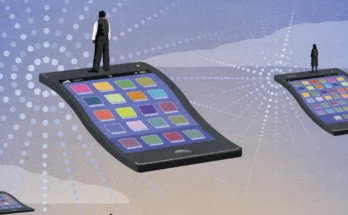With the sudden large-scale outbreak of covid-19 globally, and the pandemic is still pretty tense especially in Europe and America, combining the fact that there is no effective vaccine widely available for the time being, the year 2020 has seen unexpected changes to all walks of life.
One of the changes is that there is increasingly more SpO2 monitoring supported electronic devices from various brands, mainly smart watches and bracelets, since the SpO2 level of the coronavirus affected will drop significantly.
Apple, the biggest player in the wearable market, which has a 32 percent market share according to data from analysts IDC, released the Apple Watch 6 series with C monitoring supported. In one or two months, smartwatches with blood oxygen measurement function are released one after another. Flagship smartwatches such as Vivo WATCH, Huawei Watch GT2, HONOR Watch GS Pro, Huami Amazfit GTR 2, and GTS 2 almost all include this function.
So, how effective is the SpO2 function on smartwatches and bracelets in preventing and controlling the epidemic or protecting yourself and your family?
1. The working principle and accuracy of SpO2 for smartwatches and bracelets.
The optical sensor is the core of the smartwatch and bracelet blood oxygen measurement. The blood oxygen monitoring module of the smartwatch is composed of an optical sensor, a front-end signal acquisition system, and an algorithm. The principle is based on the absorption rate of red and infrared light by oxygenated hemoglobin (HbO2) and deoxygenated hemoglobin (Hb) are different. Red light and infrared light are irradiated to the skin through the optical sensor, and then the red light and infrared light reflected by the blood vessels under the skin are obtained, and finally, the blood oxygen is calculated by the algorithm.
From the above, it’s clear that the accuracy could be affected by at least three factors, the optical sensor, the signal acquisition system, and the algorithm. Currently, it’s widely believed that the accuracy of smartwatch and bracelet testing blood oxygen needs to be further improved since there is still a certain gap between achieving medical-level blood oxygen monitoring.
This may be one of the reasons why all the mentioned smartwatch and bracelet brands, reminded their consumers somewhere inside the box and on the website that, the blood oxygen measurements are not for medical use.
2. What does abnormal SpO2 mean?
SpO2 reading for normal people is typically between 95% and 100%. If the reading is lower than that, it’s considered abnormal. Because of the outbreak of coronavirus, we’ve already known that one of the common symptoms of patients with new coronavirus is “decreased blood oxygen saturation”, which also indicates that abnormal blood oxygen level data alone doesn’t mean you have coronavirus or need medical care for 100% but further investigation is required in such cases.
In fact, in addition to being sick and requiring treatment, there are some conditions that can cause blood oxygen to be lower than normal. For example, when climbing a mountain at an altitude of 3000 meters and the heart rate does not exceed 100, blood oxygen saturation greater than 90% is normal.
In one word, blood oxygen detection has certain guiding significance for the early detection of body abnormalities. But abnormal SpO2 should be combined with other symptoms to diagnose the disease a patient has.
3. Smartwatch and bracelet did help to detect medical needs
There are countless cases on the internet sharing that a smartwatch or bracelet helped to detect disease at its early stage after prompting a heart condition alert. But seldom is a story or case in which abnormal SpO2 reading helped to detect medical needs found.
However, a team of scientists from the Scripps Research Translational Institute sees encouraging signs that smartwatch and bracelet with SpO2 monitoring supported could help to control COVID-19, according to the news on October 29, 2020, from ScienceDaily. To answer the question that we raise from the beginning, there is a good reason to believe that the SpO2 monitoring feature on smartwatch and bracelet is, though could not reach the accuracy of medial blood oxygen measurement, still helpful to detect medial needs. Though the SpO2 monitoring is not the only symptom of coronavirus, if everyone with abnormal reading remembers to wear a mask and seek medical care, then it could be an effective way to control further spreading of the pandemic, especially considering that smart watch and bracelet with SpO2 monitoring supported is more increasingly popular now.
Guest Post Service By www.guestarticlehouse.com




